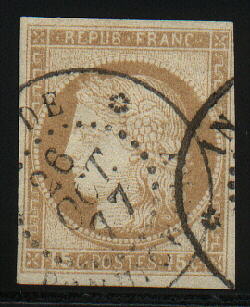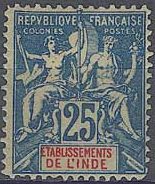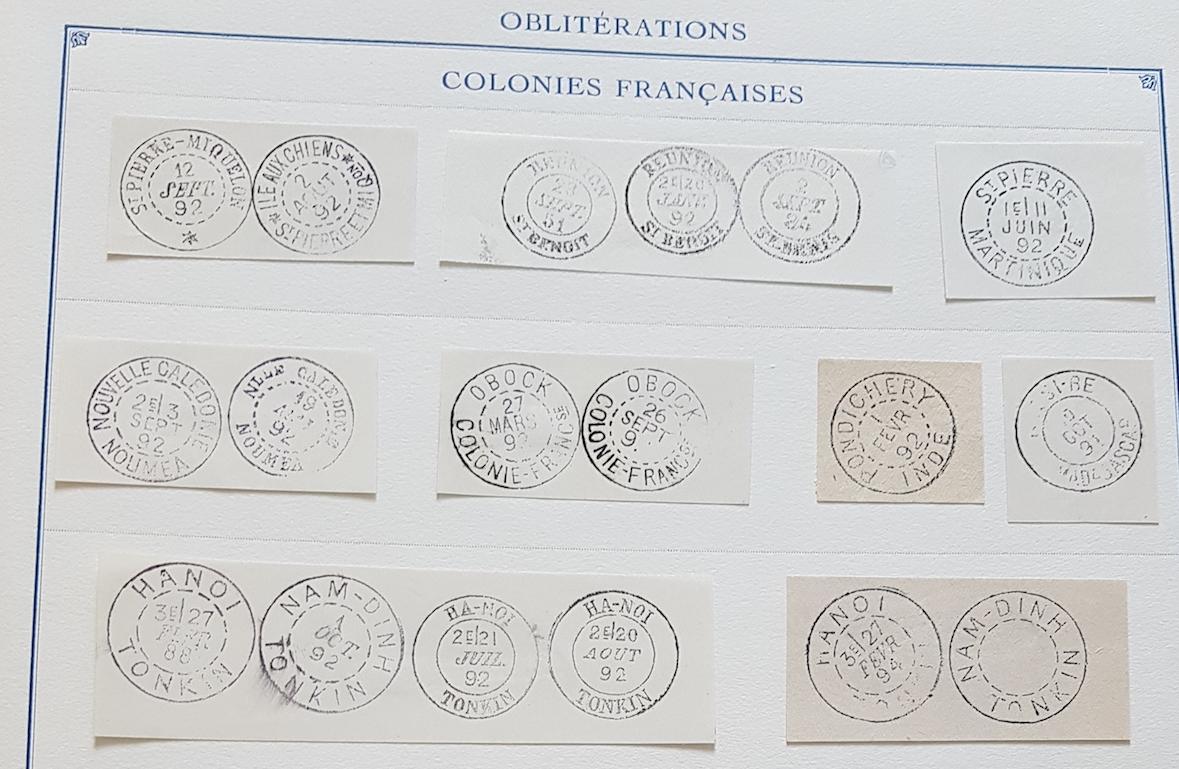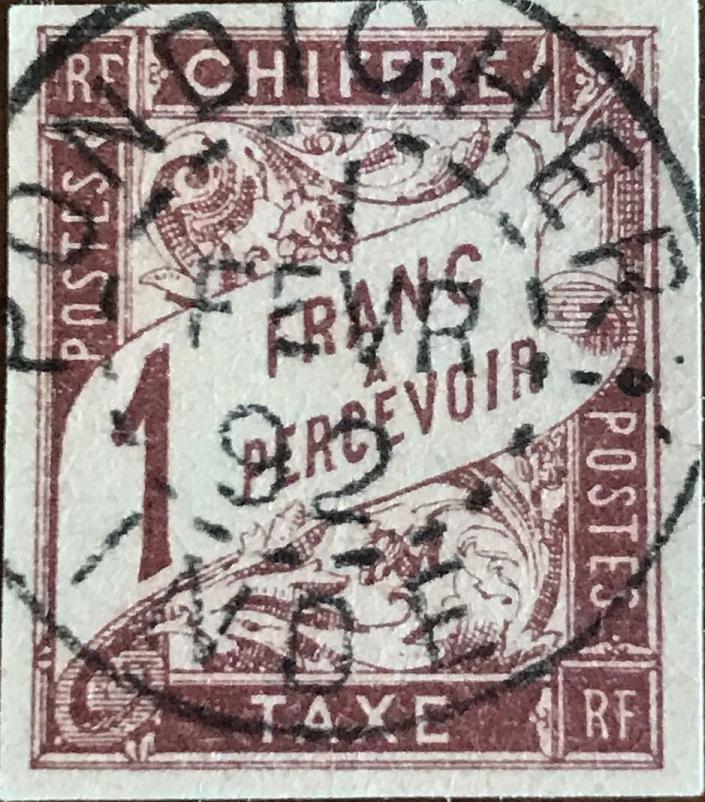 |
|||||
|
|||||
| Preview of Stamps Catalogue: VOLUME 1 |
 |
|||||
|
|||||
| Preview of Stamps Catalogue: VOLUME 1 |
╔tablissement de l'Inde (Inde Franšaise)
Return To Catalogue - 1914 onwards - France
Note: on my website many of the
pictures can not be seen! They are of course present in the catalogue;
contact me if you want to purchase it.
Stamps of the French Colonies used in the Indian Settlements of France:




Pondichery obliteration and "INDE" cancel on French
colonies stamp

Pondichery cancel on 1 F stamp
1 c black 2 c brown on yellowish 4 c brown 5 c green 10 c black 10 c red 15 c blue 15 c grey 20 c red on yellow 25 c black 25 c blue 30 c brown 35 c black 40 c orange 45 c black 50 c red 50 c brown on blue 75 c lilac 1 Fr green
These stamps have perforation 14 x 13 1/2. For stamps in the same Tablet design, but for other French colonies, click here.
Value of the stamps |
|||
vc = very common c = common * = not so common ** = uncommon |
*** = very uncommon R = rare RR = very rare RRR = extremely rare |
||
| Value | Unused | Used | Remarks |
| 1 c | * | * | |
| 2 c | * | * | |
| 4 c | * | * | |
| 5 c | ** | * | |
| 10 c black | ** | * | |
| 10 c red | ** | * | |
| 15 c blue | * | * | With background pattern |
| 15 c grey | R | R | |
| 20 c | *** | *** | |
| 25 c black | ** | ** | |
| 25 c blue | R | R | |
| 30 c | RR | RR | |
| 35 c | *** | *** | |
| 40 c | *** | *** | |
| 45 c | *** | *** | |
| 50 c red | *** | *** | |
| 50 c brown on blue | R | R | |
| 75 c | *** | *** | |
| 1 Fr | *** | *** | |
Typical cancels:


Pondichery and Karikal

Rectangle with dots and "INDE" in the center.

(Fournier forgery)
Fournier has made forgeries of these 'Tablet' stamps, for more information on these forgeries click here.


Fournier forgery with forged "PONDICHERY 1 FEVR 92
INDE" cancel. Also a Fournier forgery of Indochina(!) with
the same cancel.

Fournier forged cancels, the French India forged cancel can be
found in the 2nd row, fifth cancel.





Suspicious postage due stamps with "PONDICHERY 1 FEVR 92
INDE", perhaps Fournier forgeries?

Some modern forgeries which also have the non matching corner
perforations.
0,05 (red) on 25 c black 0,10 (red) on 25 c black 0,15 (red) on 25 c black 0,40 (black) on 50 c red
Value of the stamps |
|||
vc = very common c = common * = not so common ** = uncommon |
*** = very uncommon R = rare RR = very rare RRR = extremely rare |
||
| Value | Unused | Used | Remarks |
| 0,05 on 25 c | RR | RR | Only 2100 stamps issued |
| 0,10 on 25 c | RR | RR | |
| 0,15 on 25 c | RR | R | |
| 0,40 on 50 c | RR | RR | Only 1500 stamps issued |
Special cancel "INDE" and dots surrounded by a rectangle:


These two stamps appear to be forgeries to me, even though they
were offered as genuine on a prestiguous Internet auction
0,05 c blue
Value of the stamps |
|||
vc = very common c = common * = not so common ** = uncommon |
*** = very uncommon R = rare RR = very rare RRR = extremely rare |
||
| Value | Unused | Used | Remarks |
| 0,05 c | *** | *** | |
If I'm well informed, there are some varieties of the overprint. It varies from 18 1/2 to 19 1/2 mm, the thickness of the lines below "caise" is variable. The "O" of "POSTES" is between the "d" and "e" of "Inde" or below the "e". The comma can be oval or round. A variety with larger "E" in "POSTES" exists. The "0" of the value exists normal or small. Some corrections were done (not sure about this). I would like to thank Yves Claude Levern for supplying me with this information.

A sheetlet with all postmarks of Pondichery of 1914; prepared by
the postmaster(?).